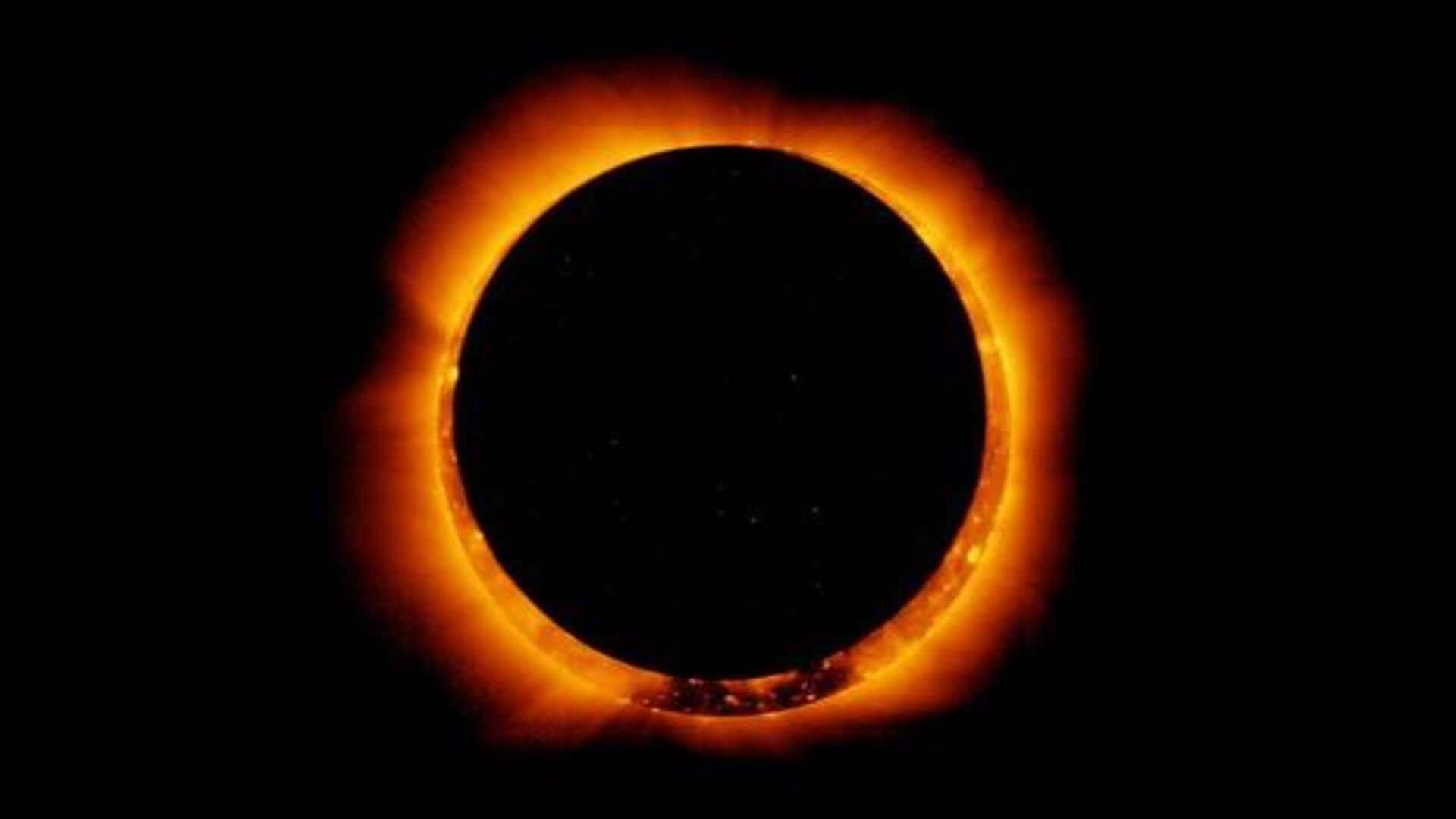
Spectacular 'ring of fire' solar eclipse happens on October 14
What's the story
On October 14, sky enthusiasts will have the chance to witness a stunning celestial event: an annular solar eclipse, which will turn the Sun into a "ring of fire." This phenomenon occurs when the Moon partially covers the Sun, leaving a brilliant ring visible. The path of annularity, where the "ring of fire" can be seen, stretches 200 kilometers wide and spans 10 countries from Oregon to Texas in the US and beyond. It won't be visible in India.
Details
How to watch the event
For those not located within the path of annularity, a partial solar eclipse will be visible where the Moon will appear to take a "bite" out of the Sun. There are plenty of online resources to help viewers get ready for and follow the eclipse, including NASA's interactive map. Livestreams will also be available for those who want to view the eclipse online.
Insights
Scientific importance of solar eclipses
Solar eclipses are of particular interest as they offer an opportunity to study the Sun's outer atmosphere or corona. The upcoming solar eclipse also serves as a "warm-up" for the total solar eclipse happening on April 8, 2024. Interestingly, both eclipses will occur during an active period in the Sun's current solar cycle, as the giant star edges toward "solar maximum" in 2024. The solar cycle happens about every 11 years and is driven by the Sun's magnetic field.
Facts
NASA plans to conduct scientific observations during the upcoming eclipse
During the solar eclipse happening this week, NASA will send three rockets to observe "how the sudden drop in sunlight affects our upper atmosphere." The rockets will be launched successfully. Each rocket will "deploy four small scientific instruments that will measure changes in electric and magnetic fields, density, and temperature," said NASA in a blog. "If they are successful, these will be the first simultaneous measurements taken from multiple locations in the ionosphere during a solar eclipse."